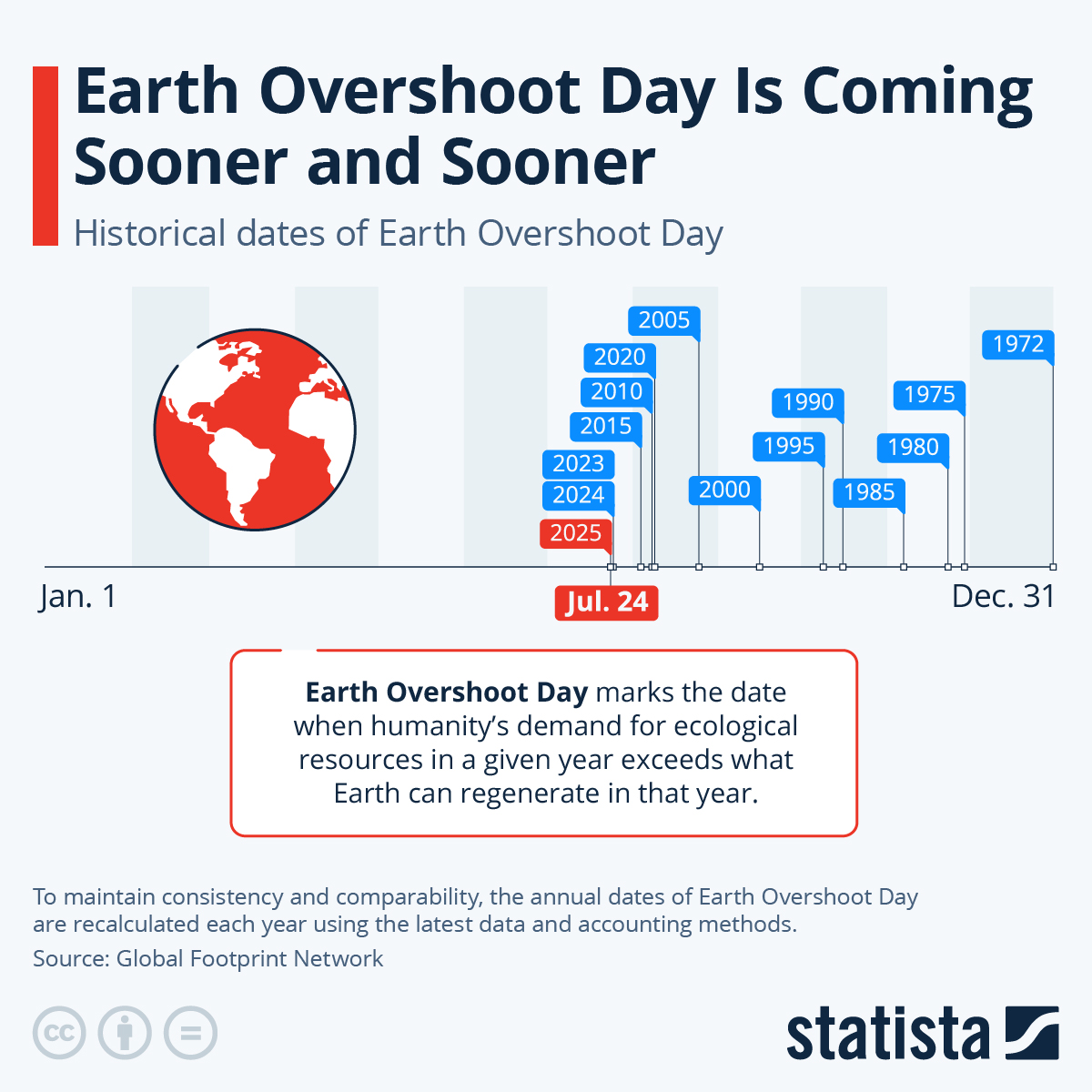July 24 marks this year's Earth Overshoot Day, the day that humanity’s demand for ecological resources exceeds the resources Earth can regenerate within that year, Statista reports.
Over the decades, the ecological footprint of humans has gradually increased, all while Earth’s biocapacity, i.e. its ability to regenerate resources has diminished significantly. That has led to Earth Overshoot Day arriving earlier and earlier, moving from as late as December 31 in 1972 to mid-July in 2025 and previous years.
This year's date means that humanity is currently using nature's resources 1.8 times faster than ecosystems can regenerate. This includes people emitting more carbon dioxide than the biosphere can absorb, using more freshwater than can be replenished and other overuse of finite natural resources. "Overshoot isn’t just the driver behind biodiversity loss, resource depletion, deforestation and the buildup of greenhouse gases [GHGs] in the atmosphere, which intensifies extreme weather events; it also fuels stagflation, food and energy insecurity, health crises and conflict," the organisation explains in the press release announcing this year's Earth Overshoot Day.
The last time Earth Overshoot Day moved backwards was in 2020, when the Covid-19 pandemic stopped the world in its tracks, significantly reducing humanity's resource consumption and CO2 emissions. According to recalculations based on the latest available data and accounting methods, Overshoot Day fell on August 9 that year, but quickly bounced back to July 29 in 2021, when normality gradually returned in large parts of the world. For the past three years, Earth Overshoot Day stood still on July 25 before moving one day forward this year.
The concept of Earth Overshoot Day was first conceived by Andrew Simms of the UK think tank New Economics Foundation, which partnered with Global Footprint Network in 2006 to launch the first global Earth Overshoot Day campaign. WWF, the world’s largest conservation organisation, has participated in Earth Overshoot Day since 2007.
 You will find more infographics at Statista
You will find more infographics at Statista
bneGREEN

Tehran running dry with reservoirs at 3% as record drought wipes out rainfall
Tehran reservoirs at just 3% capacity as city faces worst drought on record with rainfall 97% below average, water chief warns capital cannot support population growth.

Examining the financial repercussions of recent tropical cyclones
While the humanitarian toll is devastating, the overall financial impact on the region is forecast to be relatively contained, primarily because the major industrial and commercial heartlands were largely spared from the worst destruction.

India passes milestone power generation capacity as non-fossil share tops 51%
India’s installed power generation capacity has climbed to 505,023 MW as of October 31, 2025, with non-fossil fuel sources now accounting for more than half of the national mix, Minister of State for Power Shripad Yesso Naik told the Upper House.

Environmental crime growing sharply across Western Balkans, watchdog warns
Environmental crime has become one of the fastest-growing illicit economies in the Western Balkans, according to a new report by the Global Initiative Against Transnational Organized Crime.



